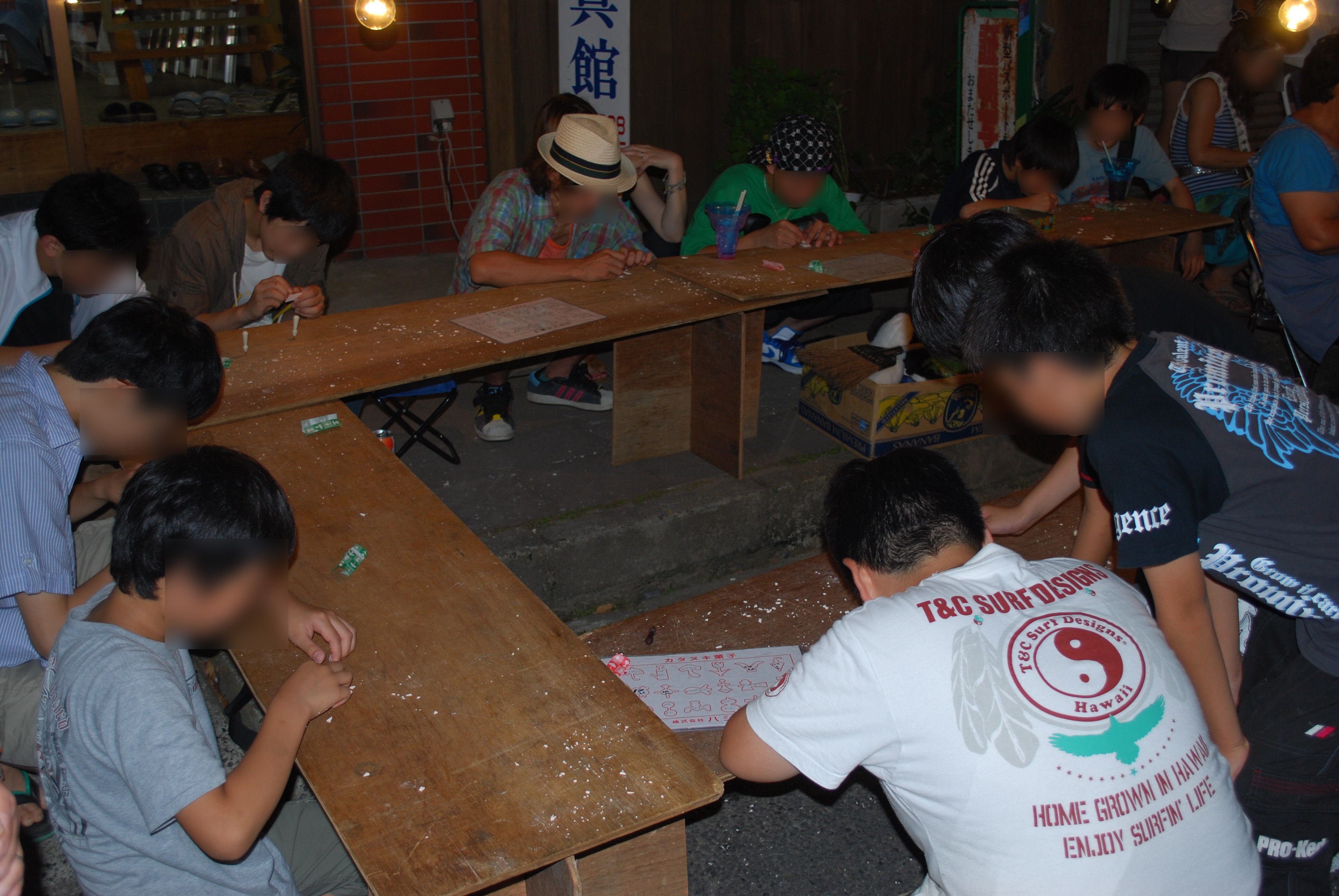Katanuki on:
[Wikipedia]
[Google]
[Amazon]
 ''Katanuki'' ( or ), literally diecutting, is an activity common at
''Katanuki'' ( or ), literally diecutting, is an activity common at
 ''Katanuki'' ( or ), literally diecutting, is an activity common at
''Katanuki'' ( or ), literally diecutting, is an activity common at Japanese festivals
Japanese festivals are traditional festive occasions often celebrated with dance and music in Japan. Many festivals have their roots in traditional Chinese festivals, but have undergone extensive changes over time to have little resemblance ...
in which a colored mold of candy made of wheat flour, starch, or sugar, is carved using a needle or toothpick in the shape of an animal, star, a cherry blossom, etc. Those who are able to skillfully carve the mold receive a prize.
Overview
The official name for ''katanuki'' is , but it is commonly called or simply . Although it is called diecut candy, it is not made for the purpose of eating. The raw materials are indeed foodstuffs, but because it is not distributed as food, and because it is a health hazard to consume and is not particularly appetizing, it is generally not eaten. ''Katanuki'' was once a regular good carried in carts by ''tekiya
''Tekiya'' ( or ; "peddlers") are itinerant Japanese merchants who, along with the ''bakuto'' ("gamblers"), historically were predecessors to the modern ''yakuza''.
A loose American equivalent of the ''tekiya'' could be seen in carnies.
Histor ...
'' (peddlers) on ''ennichi
Ennichi (, "related day") is a day believed to have a special relation ( en) with a particular Japanese deity. Often, it is a day when a deity is believed to have been born or left the world. In Shinto, this day is encouraged to be embraced as it ...
'' (auspicious Shinto days when festivals are often held), but at present, this is becoming less common. A long time ago, it was a side-show at picture story shows ().
Aside from carts, the molds are sometimes sold at small candy stores, though this is rare.
See also
*Dalgona
''Dalgona'' () or ''ppopgi'' () is a Korean candy made with melted sugar and baking soda. It was a popular street snack in the 1970s and 1980s, and is still eaten as a retro food. When a pinch of baking soda is mixed into melted sugar, the therm ...
, a Korean candy which is used in a similar way.
Japanese culture
{{Japan-festival-stub